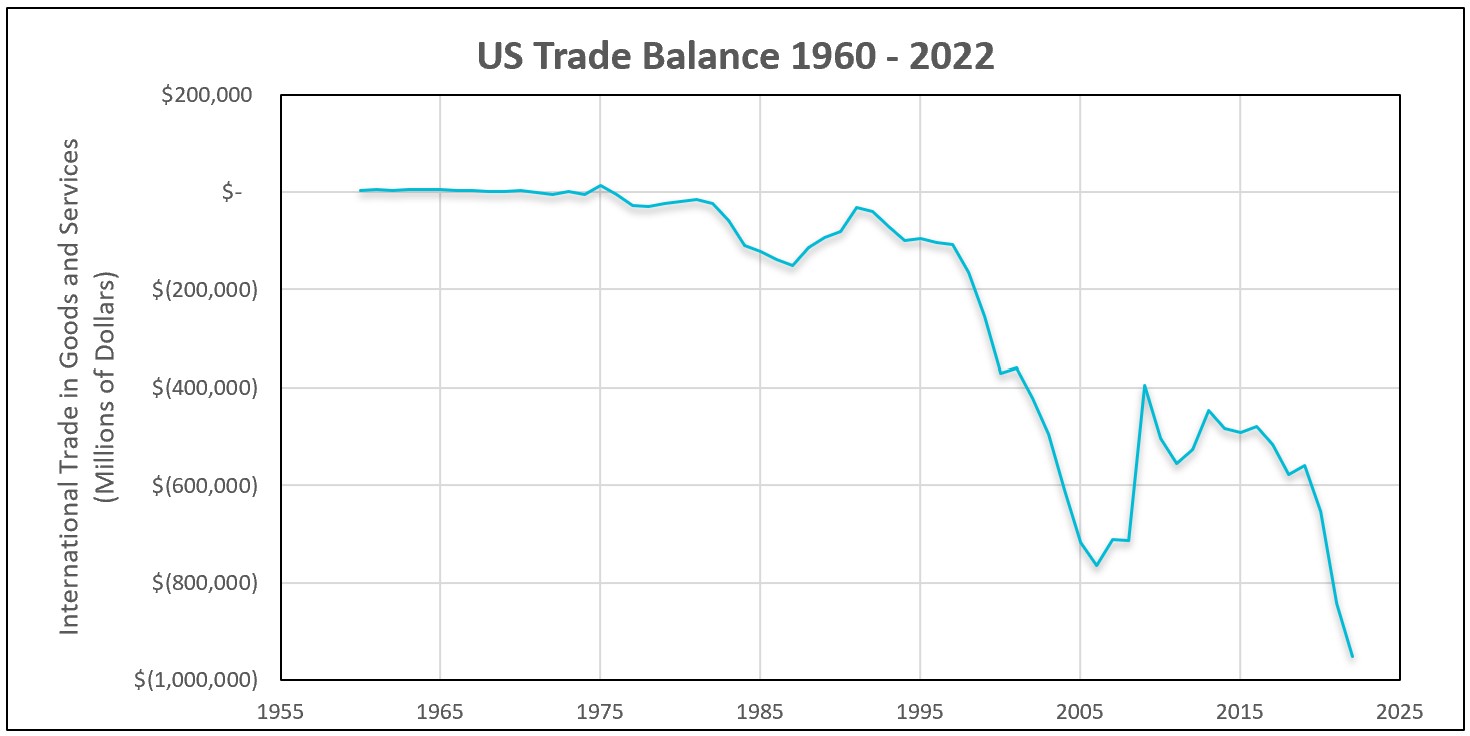Trade Surplus
View FREE Lessons!
Definition of Trade Surplus:
A
trade surplus occurs when a country’s balance of trade is positive, which means the value a country exports exceeds the value it imports.
Detailed Explanation:
A country’s balance of trade equals the value of its exports minus its imports. A country has a trade surplus when its balance is positive because its exports exceed its imports. A country has a trade deficit when its trade balance is negative. In this case, imports exceed exports.
The United States has had a trade deficit since 1975, when its reliance on foreign oil and rising oil prices contributed to the increased value of imports. The US has had a trade surplus for services every year since 1971, but the trade deficit for goods far exceeds the surplus for services. The graph illustrates the United States’ balance of trade between 1960 and 2022.

Source: US Census Bureau - Foreign Trade Statistics
What Causes a Trade Surplus or Deficit
The US trade deficit surged between 2004 and 2008 when the rapid growth of the US economy outpaced that of many other global nations and resulted in an increased demand for imported goods and services in the US, surpassing the demand for US goods and services in other countries.
The Chinese government intentionally created a trade surplus by manipulating the yuan’s exchange rate of the yuan to promote exports. Had the yuan appreciated against the dollar, Chinese goods would have become more expensive for Americans, while US goods would have become more affordable for Chinese consumers and producers.
In 2019 and 2020, a severe recession in Asian countries, notably Japan, led to a depreciation of their currencies. This caused the prices of their goods to decrease relative to the prices of US goods. Consequently, US imports from Asian countries rose, and US exports declined, contributing to an expansion of the trade deficit in the US. Some governments resort to currency devaluation during recessions to stimulate exports and discourage imports.
Surpluses are advantageous during recessionary periods as increased exports generate employment and boost GDP. Conversely, a trade deficit can be beneficial during economic expansions by mitigating inflationary pressures through added competition from imports.
Factors influencing the trade balance encompass currency exchange rates, disparate comparative advantages, and governmental trade barriers. A depreciating currency often makes a country’s goods and services more competitively priced abroad, fostering an increase in exports. Comparative advantages, such as easy access to crucial raw materials or a highly educated workforce, also play a pivotal role in trade dynamics, allowing countries to specialize in areas where they are most efficient. Additionally, government-imposed trade barriers like tariffs, quotas, and negotiated trade agreements significantly impact a nation’s trade balance.
Dig Deeper With These Free Lessons:
What is Money
Comparative Advantage and Specialization
Gross Domestic Product – Measuring an Economy's Performance
Managing Supply Using Outsourcing, Tariffs, Subsidies, Quotas, and Licenses
